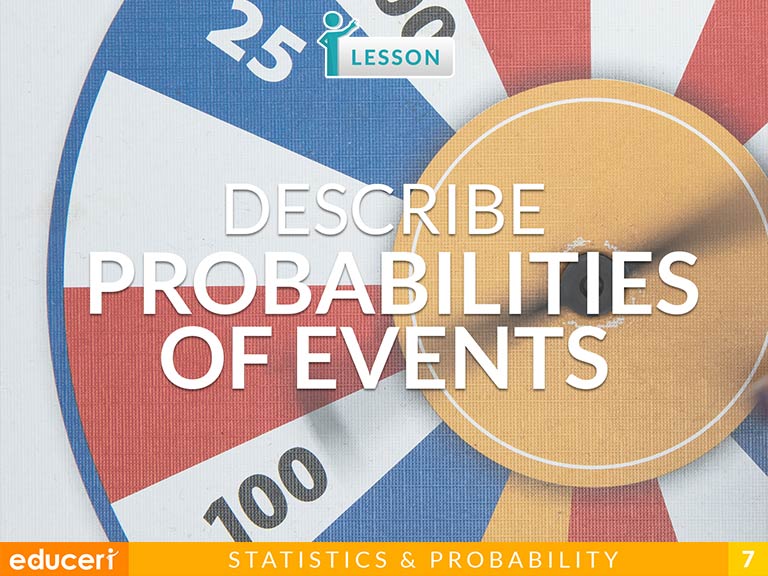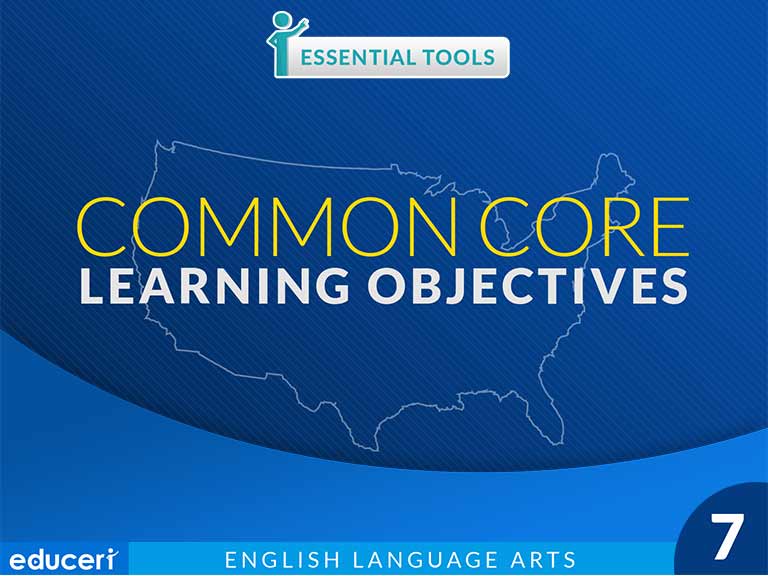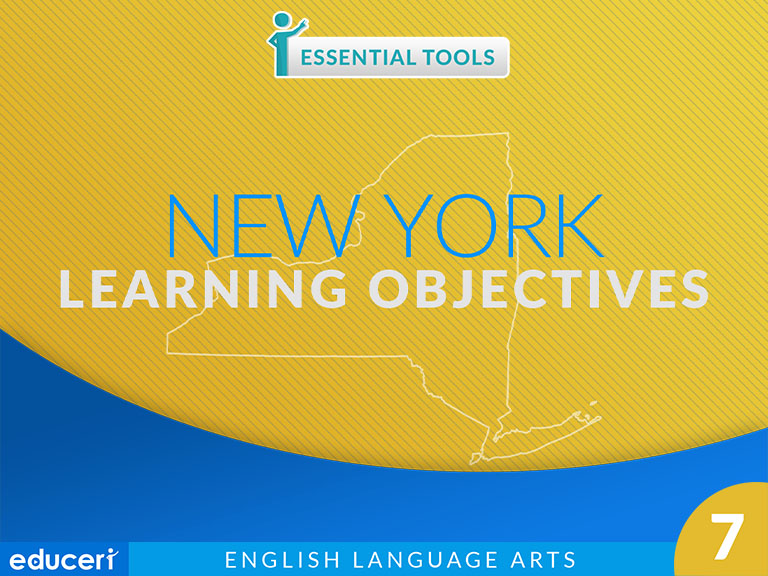All Lessons

Compute the Area of Irregular (Composed) Two-Dimensional Figures
7.G.4 Know the formulas for the area and circumference of a circle and use them to solve problems; give an informal derivation of the relationship between the circumference and area of a circle.
7.G.67.G.6 Solve real-world and mathematical problems involving area, volume and surface area of two- and three-dimensional objects composed of triangles, quadrilaterals, polygons, cubes, and right prisms.
This measurement and geometry lesson focuses on computing the area of irregular two-dimensional figures. The lesson includes research-based strategies and strategic questions that prepare students for assessments. In this lesson, students divide the irregular figure into common shapes, such as triangles and rectangle or circles. Then, they compute the areas of the common shapes and the sum of all the areas. In addition to the lesson, there are six pages of Independent Practice and review with questions modeled after current adaptive testing items.
Share This Lesson

Compute Perimeter and Area of Two-Dimensional Figures
7.G.4 Know the formulas for the area and circumference of a circle and use them to solve problems; give an informal derivation of the relationship between the circumference and area of a circle.
7.G.67.G.6 Solve real-world and mathematical problems involving area, volume and surface area of two- and three-dimensional objects composed of triangles, quadrilaterals, polygons, cubes, and right prisms.
This measurement and geometry lesson focuses on computing the perimeter and area of two-dimensional figures. The lesson includes research-based strategies and strategic questions that prepare students for assessments. In this lesson, students read the problem and circle whether you are solving for perimeter, circumference, or area. Then, write the formula needed to solve the problem. Finally, substitute the known values into the formula and solve the equation. In addition to the lesson, there are six pages of Independent Practice and review with questions modeled after current adaptive testing items.
Share This Lesson

Solve Problems Involving Surface Area of Three-Dimensional Objects
This geometry lesson teaches students how to calculate the surface area of rectangular prisms. The lesson includes research-based strategies and strategic questions that prepare students for assessments. In this lesson, students will solve problems involving the surface area of rectangular prisms.
Share This Lesson

Use The Triangle Inequality Theorem to Determine Possible Triangles
This math lesson teaches students how to use the Triangle Inequality theorem to determine the possible range of values for an unknown side of a triangle. The lesson includes research-based strategies and strategic questions that prepare students for standardized assessments. In this lesson, students will calculate the sum and difference of the two known sides of the triangle and recognize that the unknown side must have a value between the two. In addition to the lesson, there are two pages of independent practice and nine pages of periodic review with questions modeled after standardized assessments.
Share This Lesson

Represent Outcomes for Compound Events
(A) Represent sample spaces for simple and compound events using lists and tree diagrams
7.SP.8 Find probabilities of compound events using organized lists, tables, tree diagrams, and simulation.
7.SP.8.A7.SP.8.A Understand that, just as with simple events, the probability of a compound event is the fraction of outcomes in the sample space for which the compound event occurs.
7.SP.8.B7.SP.8.B Represent sample spaces for compound events using methods such as organized lists, tables and tree diagrams. For an event described in everyday language (e.g., "rolling double sixes"), identify the outcomes in the sample space which compose the event.
This statistics, data analysis, and probability lesson focuses on representing outcomes for compound events. The lesson includes research-based strategies and strategic questions that prepare students for assessments. In this lesson, students read the question and identify the desired outcome. Then, they use a tree diagram or table to determine the outcomes. Finally, they list all the outcomes for the compound event, identify the desired outcomes, and set up a fraction to determine the probability of the event. In addition to the lesson, there are eight pages of Independent Practice and review with questions modeled after current adaptive testing items.
Share This Lesson

Methods of Sampling (Random, Convenience, Self-Selected)
This statistics, data analysis, and probability lesson focuses on identifying different ways of selecting a sample. The lesson includes research-based strategies and strategic questions that prepare students for assessments. In this lesson, students read the scenario, noting clues that help to identify the sampling method. Then, they identify the sampling method used in the survey (random, convenience, or self-selected), and explain how they know. In addition to the lesson, there are four pages of Independent Practice and review with questions modeled after current adaptive testing items.
Share This Lesson

Represent Probability as Ratios & Percentages
This statistics, data analysis, and probability lesson focuses on representing probability as ratios and percentages. The lesson includes research-based strategies and strategic questions that prepare students for assessments. In this lesson, students read the question and identify what probability they are looking for. Then, they write the number of ways the event can occur and determine the number of total outcomes. Finally, they write the probability as a ratio and reduce, if needed, and then write it as a percentage. In addition to the lesson, there are five pages of Independent Practice and review with questions modeled after current adaptive testing items.
Share This Lesson

Describe Populations and Samples
(Y11-12) Understand the purpose of sampling to provide an estimate of population values when a census is not used (ACMEM129)
ACMEM130(Y11-12) Investigate the different kinds of samples; for example, systematic samples, self-selected samples, simple random samples (ACMEM130)
ACMEM131(Y11-12) Investigate the advantages and disadvantages of these kinds of samples; for example, comparing simple random samples with self-selected samples (ACMEM131)
ACMEM132(Y11-12) Identify the target population to be surveyed (ACMEM132)
Share This Lesson

Draw Inferences Using Data Samples
Share This Lesson

Share This Lesson

Middle School Next Generation Science Standards Learning Objectives & Essential Tools
Standards are often confused with being Learning Objectives. Standards are the content and skills students need to know by the end of a school year. Learning Objectives are the content and skills students need to know by the end of a lesson. Our Next Generation Science Standards Learning Objectives & Essential Tools guides display teachable Learning Objectives alongside the standards for easy reference. Here on Educeri, the guide also links to relevant lessons right here on the site, making finding a lesson easy. As we add more lessons, we will be updating this guide, so check back regularly.
Share This Lesson

Grades 6-8 Common Core State Standards Learning Objectives - Literacy in History/Social Studies, Science, and Technical Subjects
Common Core Standards are often confused with being Learning Objectives. Core Standards are the content and skills students need to know by the end of a school year. Learning Objectives are the content and skills students need to know by the end of a lesson. Our Common Core Learning Objectives & Essential Tools guides display teachable Learning Objectives alongside the standards for easy reference.
Share This Lesson

Grade 7 Common Core State Standards Learning Objectives - ELA
Common Core Standards are often confused with being Learning Objectives. Core Standards are the content and skills students need to know by the end of a school year. Learning Objectives are the content and skills students need to know by the end of a lesson. Our Common Core Learning Objectives & Essential Tools guides display teachable Learning Objectives alongside the standards for easy reference. Here on Educeri, the guide also links to the relevant lesson right here on the site, making finding a lesson easy. As we add more lessons, we will be updating this guide, so check back frequently.






